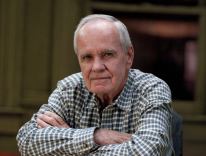Blessed among All Women
Robert Ellsberg
Crossroad, $19.95, 316 pp.
____________________________________
Robert Ellsberg enjoyed much success with his book All Saints (1997), which provided daily reflections on saintly and prophetic figures. Blessed among All Women is a follow-up to that book, although it is devoted exclusively to “women saints, prophets, and witnesses for our time.” Instead of following a calendar year, these portraits are grouped under the rubric of the Eight Beatitudes.
Roughly 140 women are included in this book. Some are well known, such as the Blessed Mother and the great saints. Other choices are more unexpected. Under “the meek,” for instance, Ellsberg places the black children who died in the 1963 Birmingham, Alabama, bombing. Among the “peacemakers” he includes Sophie Scholl and other members of the White Rose resistance movement who were killed by the Nazis. The entries span women from second-century martyrs like Blandina to our contemporaries. Readers of Commonweal will be pleased to see an essay on the late associate editor Daria Donnelly (died 2004), who finds her place among “the pure of heart”-the only popularly acclaimed saint with whom I exchanged e-mails! One could use this volume for daily meditation, or for browsing. Thumbing through the pages reveals many insights: one understands the pure anguish of Käthe Kollwitz’s art when one discovers that she lost her son in World War I and her grandson in World War II. I’d love to know more about the wandering “Peace Pilgrim,” an anonymous woman who walked more than twenty-five thousand miles in the 1950s and ’60s as a witness against war. On a lighter note, who does not love St. Brigid of Kildare, who imagined heaven as having a vast lake of beer presided over by Christ!
Ellsberg writes that each story here is a story about God. There is much truth in that observation. I think it was Elie Wiesel who once said that God created man and woman because God loves a good story. This wonderful book has a generous selection of those stories. It is a worthy sequel to All Saints.
__________________
Caryll Houselander
Essential Writings
Edited by Wendy Wright
Orbis, $16, 223 pp.
___________________________
There is a long list of Catholic writers who, once well known among educated Catholics, are lost to the current generation. That list would have to include Caryll Houselander (1901-1954), a friend of the publisher Maise Ward and one of the subjects of Ellsberg’s book. Houselander was one of those semibohemian, artistic, slightly peculiar (Ward’s biography was titled The Divine Eccentric), but devoutly spiritual persons who were part of the so-called modern Catholic renaissance in English letters. She was an author, poet, artist, and apologist for the Catholic faith.
This volume is part of the Modern Spiritual Masters series published by Orbis. Wendy Wright, a professor at Creighton University, provides a biographical sketch of Houselander along with generous selections from Houselander’s poetry and prose. Wright also includes art that Houselander composed for Catholic magazines and for the Grail, an international laywomen’s movement. Houselander’s art reminded me of the work of Eric Gill, if a bit more sentimental. She worked in prints and woodcuts, the regnant medium for religious art at the time.
Although born a Catholic, Houselander did not return to the faith until after she attended art school. In her twenties she had a passionate relationship with the British spy Sidney Reilly (said to be the inspiration for James Bond), who abruptly left her to marry someone else. (The exact nature of that relationship is unclear because it was glossed over by Maisie Ward, who sought to make her subject unambiguously saintly.) Houselander labored for years as a freelance writer and artist, and worked for a time as a counselor for the mentally ill. She was active in the Catholic Evidence Guild and published a series of popular books of spirituality, including The Reed of God, A Rocking Horse Catholic, and her memorable The Way of the Cross.
In her books, Houselander called for believers to engage in “Christing” the culture-making the presence of Christ palpable in a world of suffering, pain, guilt, and deprivation. She wrote that “the saint is the only person in the world who makes no attempt whatever to resist his destiny as a human being, the destiny to be a Christ.” Tough-minded, she broke with Dorothy Day over the issue of pacifism at the beginning of World War II. She was a person of immense compassion who believed deeply in the saving presence of the Lord. This is illustrated well in one of her woodcuts, which showed the blood of Christ pouring out over an unidentified city. As she battled cancer in the last years of her life, she composed a series of woodcuts and written meditations on the Way of the Cross. If there ever was an encounter with the via dolorosa, this was it. We should be grateful to Wendy Wright for introducing Houselander to a contemporary readership.
____________________________________________________
First Corinthians Interpreted by Early Christian Commentators
Translated and edited by Judith L. Kovacs
Eerdmans, $35, 340 pp.
________________________________________________________________________________
The late Raymond Brown once wrote that students of the New Testament should begin with 1 Corinthians because it provides a window into the life of an early Christian community before the canonical gospels were written. Obedient to his advice, I have always started with that letter when teaching my undergraduate course in theology. My course will be greatly enriched by Judith Kovacs’s volume on 1 Corinthians, which is the second book in The Church’s Bible series, edited by the distinguished historian Robert Wilken. These volumes are scholarly, but also accessible to the intelligent reader. They would be excellent resources for preachers and study groups.
Each volume of this series is designed in the same way. Selections from (largely) patristic commentators are provided alongside the biblical text. Kovacs’s volume also includes general comments on 1 Corinthians from Ambrosiaster, Theodoret, and John Chrysostom. The last selection is a wonderful description of Corinth from someone who speaks with the authority and pride of a native Greek speaker. Kovacs provides commentary from close to thirty patristic sources in all, and each selection is pertinent to the text at hand. Let me provide two good examples. On the issue of women praying or prophesying with unveiled heads (1 Cor 11:5), Kovacs reprints a conversation between a Montanist and an Orthodox Christian over the issue of women who prophesy in church. (Montanists have been the subject of much interest because of the role of women in their community.) Alongside a passage in 1 Corinthians 11 about the institution of the Eucharist, Kovacs provides a long selection from the ancient liturgy of St. James to show how the liturgy elaborated upon the simple narrative found in Paul.
Each chapter is prefaced with a summary of the principal themes and a guide to potential interpretative problems. Appendices at the end of the book provide brief biographies of the commentators; sources for the translated texts (Kovacs does her own translations); a bibliography of patristic texts; and separate indices of names, subjects, and scriptural texts cited.
_________________________
One Nation under God
The History of Prayer in America
James P. Moore Jr.
Doubleday, $29.95, 528 pp.
______________________________________
In One Nation under God, James Moore recounts the history of the United States from the first settlers’ encounter with Native Americans to the events of September 11, 2001. His focus is on the centrality of prayer in the American experience. He writes about the devotional practices of presidents and celebrities, and also the spiritual habits of regular Americans. It makes for a rather exhaustive (and somewhat exhausting) narrative.
Moore’s book is a treasure trove of data about our devotional life. I did not know, for example, that the child’s evening prayer “Now I lay me down to sleep...” appeared in the 1690 New England Primer, which was a reprint of a wildly successful British book. Nor was I aware that in 1768 Benjamin Franklin published an edited, more concise version of the Lord’s Prayer-or that Sarah Joseph Hale, best known as the writer of “Mary Had a Little Lamb,” was the person who convinced Abraham Lincoln to declare Thanksgiving a national holiday. Nor did I know that John Wanamaker, of Philadelphia department-store fame, set aside space in his mercantile center for a twenty-four-thousand-pipe organ so that hymns and prayers could be sung while customers went about their shopping. As a lover of old-time Southern Gospel music, I was pleased to see a tribute to the African-American composer Thomas Dorsey, whose immortal song “Precious Lord, Take My Hand,” now a standard among New Orleans jazz bands, was a poignant cry of faith after his beloved wife and baby died during childbirth.
Moore also provides a fascinating history of days of prayer, fasting, and remembrance created by presidential fiat or congressional urging. These examples are so frequent that, seeing the history laid out in detail, card-carrying ACLU members might turn cold with fear and paranoia. Moore also writes about prayers that have had long and lasting influence, such as the “serenity prayer,” adopted by Alcoholics Anonymous from a text by Reinhold Niebuhr. A prayer composed by Fr. Mychal Judge, a priest who died on 9/11 while ministering to firefighters, is also beginning to take on a life of its own: “Lord, take me where You want me to go / Let me meet what You want me to meet / Tell me what You want me to say, and keep me out of Your way.” In all, Moore gives fair proof to the observation once made by G. K. Chesterton that America is a nation with the soul of a church.
_____________________________________________
The Oxford History of Christian Worship
Edited by Geoffrey Wainwright and Karen B. Westerfield-Tucker
Oxford University Press, $55, 916 pp.
____________________________________________________________________
I often use Oxford’s revised The Study of Liturgy as a handy reference, but it pales in comparison with the recently published Oxford History of Christian Worship. Written by some of the finest liturgical scholars in the English-speaking world, this volume takes us from the origins of Christian worship to the present day. Each essay is complemented by informative sidebars and attractive illustrations, and the industrious researcher can find hints for further study in the end notes and the short bibliography following each chapter. While this work is primarily historical, the theological commentary is reliable and fair-minded. It’s also necessary. After all, one could hardly describe, say, baptismal practice without giving a fair account of “why” a certain ordinance is or is not observed.
This book is particularly appealing because it covers both the magisterial tradition and regional varieties of worship. To cite one example, after an excellent article on the reformed (that is, Calvinist) worship of Switzerland, France, and Germany, further essays explore variations of that tradition in the Netherlands, Scotland, and Korea (which has a large Presbyterian presence). There are also fine studies of liturgical inculturation in East Asia, the Pacific, and Africa. Other chapters discuss women in worship, liturgical music, spatial settings for worship (by my now deceased colleague James White), the visual arts, and vestments and other liturgical clothing.
One could read this work from cover to cover, but it also makes for excellent browsing. Just to the west of our campus is a large Mennonite and Amish settlement. I have often wondered about how the Amish worship in their “house churches,” where families alternate turning their residences into places for Sunday services. I discovered a fine discussion of the Amish order of worship in the Oxford History. There is also a good chapter on the liturgies of the ancient oriental communities (Coptic, Ethiopian, etc.), covering not only their Eucharistic liturgy, but also their sacramental practices and public prayer. That chapter, and many like it, also provides intelligent commentary on hymnody and the liturgical calendar.
This handsome volume might be a bit expensive for personal use, but it should be a part of any decent theological library. My love for good reference books, as readers of this column know, knows few bounds. This work is not exactly a reference book, but it serves the aim of the best of them, to provide reliable information in an accessible manner.
Please email comments to [email protected] and join the conversation on our Facebook page.
Share
Previous Story
Family Values
Next Story
A One-Man Think Tank


